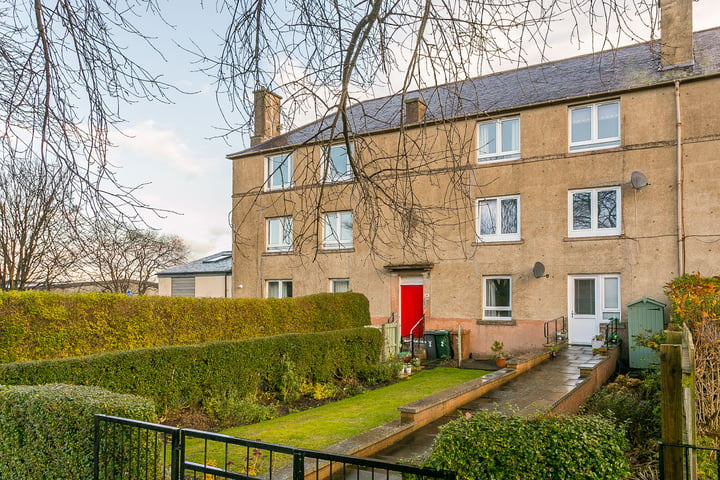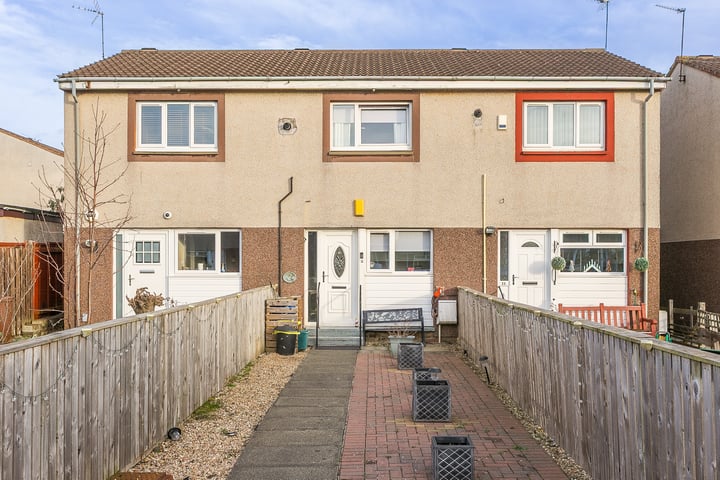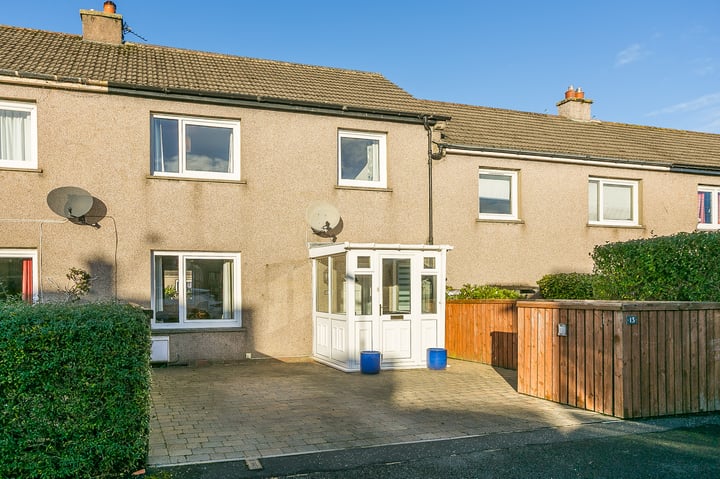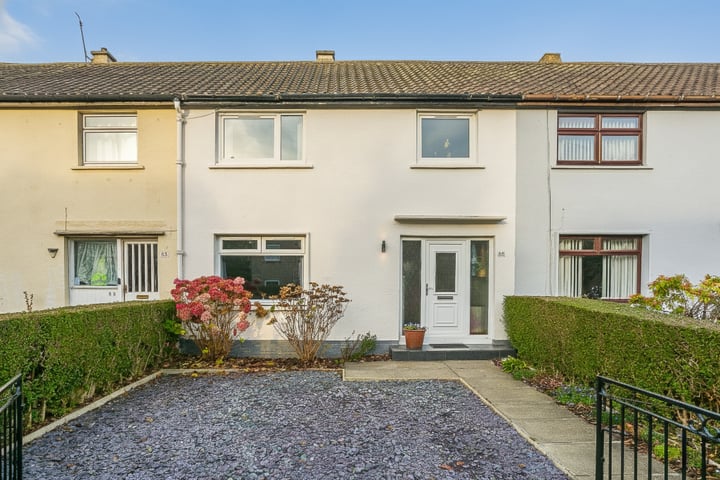One month after New Stamp Duty replaced Old Stamp Duty in the UK and we in Scotland geared up for almost four months of that tax regime before it would change to Land and Buildings Transaction Tax (LBTT)…just when you thought it was safe to get your Stamp Duty calculator out…well, they’ve only gone and changed it all again! This month’s main story in the Scottish property market was undoubtedly the change to the proposed rates for Land and Buildings Transaction Tax (LBTT). However, there were other things going on in the Scottish property market as well. Here’s this month’s round up of the main news stories affecting the Scottish property market.
Land and Buildings Transaction Tax (LBTT) – Dramatic Turnaround
In short (and it’s difficult to keep it short)…for years property purchases in the UK were subject to Stamp Duty (SDLT). Then the Scottish Government got the power to change this in Scotland and so, as of 1 April 2015, any property purchase due for settlement is to be subject to Land and Buildings Transaction Tax (LBTT). The rates for this were announced late last year, subject to being finalised in the Budget at the beginning of this year. For a while, LBTT looked, for the vast majority of property buyers in Scotland, to be more affordable than SDLT. Then…
Perhaps not entirely coincidentally just a few months before a General Election, the UK government announced in early December that Stamp Duty (SDLT) rates were to change. This change took place literally overnight. It led to New Stamp Duty rates not only being more attractive than Old Stamp Duty rates (UK-wide), but also more attractive than the as-yet-not-finalised LBTT rates (Scotland-only).
Officially not as a direct result of this, the Scottish government then adjusted its own proposed rates of LBTT: once again, due to come into force on property purchase settlements on or after 1 April 2015. These rates are to be more attractive than New Stamp Duty (SDLT) for some property purchases and less attractive for others, depending on the value of the property.
For sure, this is very complicated if you are a property buyer or seller! If you’re a property buyer, how do you know whether you want to rush your purchase through and make sure that it settles before 1 April 2015 or whether you should take your time? You’re in luck, because we’ve written a detailed guide to the new LBTT rates and created a calculator on our website that allows you to see the difference between LBTT and New Stamp Duty rates depending on the property purchase price that you enter into it. For full details, see our guide at http://www.mov8realestate.com/2015/01/changes-lbtt-rates-april/ or see the calculator at http://www.mov8realestate.com/property-purchase-tax-calculator-for-scotland/ .
In more expensive areas like Edinburgh and Aberdeen, more properties will fall into the price bracket where LBTT will cost a buyer more than the new Stamp Duty rates that were introduced at the beginning of December 2014.
It should be noted however that, even in these more expensive areas, the vast majority of properties fall into a price bracket where LBTT for buyers in Scotland will be cheaper than the Stamp Duty rates that applied until 3 December 2014. And in fact, up to £333,000, buyers in Scotland will pay less purchase tax than purchasers in the rest of the UK.
There is no doubt, however, that for properties above £333,000 and particularly above £400,000, where LBTT is already £3,350 more than Stamp Duty, buyers will be rushing to settle on the purchase before 1 April 2015 and it is likely that there will be at least a temporary dip in the market immediately after 1 April 2015 as a result.
What should also be noted here is that, on that same £400,000 property, tax under the new LBTT rates will be £13,350. The tax payable under the Stamp Duty rates that applied until 3 December 2014 would have been 3% of £400,000, or £12,000. So, although the tax burden on that buyer than is higher than it was in November 2014, it’s not so significant that it should make a huge difference to the affordability of that property to a buyer who probably needs at least a £40,000 deposit to secure a good mortgage rate. In short, at the very least up to about £400,000, if you had enough money for a deposit and the purchase tax on a property before December 2014, you will still find it about as affordable from 1 April 2015.
At £500,000, the story is a bit different. Tax under the old Stamp Duty regime would have been £20,000. Under the new Stamp Duty rates, it is £15,000. Under LBTT from 1 April 2015 it will be £23,350. So there is a clear drop in affordability from the beginning of December 2014 to beginning of April 2015.
Much higher than £500,000 and the tax difference really begins to rack-up. At £800,000, LBTT will be £54,350. Under ‘old’ Stamp Duty that would have been ‘just’ £32,000. Under ‘new’ Stamp Duty, it’s £30,000. So, whilst unlikely to garner sympathy from most people, a buyer of a property at that level really needs to get their hands on a lot more cash than they did before, especially considering that in theory a 10% deposit for a mortgage on that property would be £80,000.
In Other News…
Interest Rates
Some experts have predicted that the UK will fall into outright deflation in the coming months, prompting the Bank of England to delay a rise in interest rates until 2016 at the earliest, keeping mortgage interest rates at historically low levels. (http://www.telegraph.co.uk/finance/economics/11351780/Interest-rates-will-not-rise-until-2016-says-leading-forecaster.html)
However, other reports have suggested that UK GDP will increase by 0.4% from 2.5% to 2.9% in 2015, its highest level for seven years, but with inflation running at 0%. This will also help to delay interest rate rises until next year. (http://www.ey.com/UK/en/Issues/Business-environment/Financial-markets-and-economy/ITEM—Forecast-headlines-and-projections)
Experts seem to be pretty unified in thinking that we certainly aren’t going to see an interest rate increase in the short term, meaning that mortgages will continue to be offered at affordable rates and helping people who are on a variable rate mortgage where a ‘base rate’ increase would lead to higher mortgage payments.
House Prices
The Scotsman reported that House prices in Scotland rose by more than 4 per cent last year, with the average home now worth more than it is at the height of the property boom in 2008. The UK, however, saw a rise of about 10% in the same period. It is arguable that the rises seen in Scotland are more sustainable and sensible than those south of the border and that this actually reflects a healthier position. (http://www.scotsman.com/lifestyle/homes-gardens/property-news/scots-house-prices-rise-but-lag-behind-rest-of-uk-1-3659902)
Mortgages
The Telegraph reported that, if you have the right credit history and deposit, it’s possible at the moment to get a great deal on mortgages, with lending not being as constrained as many people continue to think that it is. (http://www.telegraph.co.uk/finance/economics/11341272/A-collapse-in-the-cost-of-loans-and-mortgages-will-give-the-Tories-a-boost.html )
On the other hand…UK mortgage loans for November apparently fell as a property slowdown continues, according to the Guardian – hard to know who to believe at times, really! The article reports that the number of loans fell month-on-month and year-on-year according to data from the Council of Mortgage Lenders. it was noted that these figures cover a period before the Chancellor of the Exchequer reformed Stamp Duty, a move that will reduce the tax bill for most homebuyers in the UK and that, according to some experts, has boosted the market since the beginning of December. (http://www.theguardian.com/money/2015/jan/14/uk-mortgages-november-fall-property-slowdown)
Conclusion
Our own experience tells us that the property market has started with a bang in 2015, with property sales for the month of January to date exceeding the numbers of sellers signing-up to bring new properties to the market. This follows-on from a really strong December where we were receiving offers on properties between Christmas and New Year.
The introduction of LBTT in Scotland for settlements taking place on or after 1 April 2015 will certainly have an effect on the property market in Scotland. The effect is likely to be felt differently in different parts of the country, largely depending on the average house price value in that area. For the vast majority of property purchases, however, even in the more expensive cities in Scotland, a reduction in the purchase tax payable on the vast majority of property purchases can only have a positive effect on the volume of transactions taking place in the property market and on property prices.
In spite of there being some great mortgage rates available at the moment, mortgages remain one of the main reasons why property purchases either fall apart or are delayed. Either the buyer doesn’t actually qualify for the mortgage finance that they thought that they did, having done the initial research and received an Agreement in Principle themselves, or the lender they have selected has such slow turnaround times on paperwork that the originally-agreed Date of Entry just isn’t achievable. Especially if you are trying to squeeze a purchase through before the 1 April 2015 deadline for LBTT replacing Stamp Duty, you need to make sure that it won’t be delayed by your mortgage finance and sellers are more likely to favour buyers who have had their finance arranged by a professional. With mortgage advice being free from many advisers, it’s well worth seeking a professional opinion.
In a way, after a month of monumental changes in the property taxation system, we’re hoping for slightly less dramatic property market news in the coming month. As always, we’ll bring you all of the property market news next month and, in the meantime, if you have any questions about buying or selling a property in Scotland, call our expert team in the office or drop us a line today!






Leave a Reply